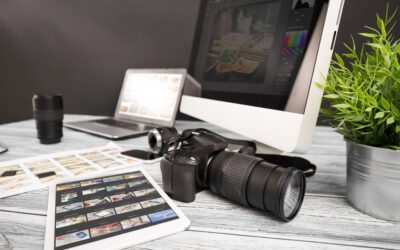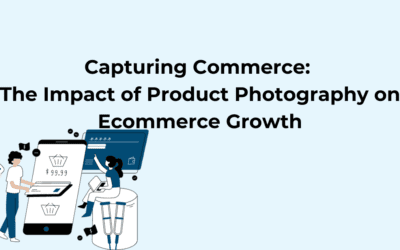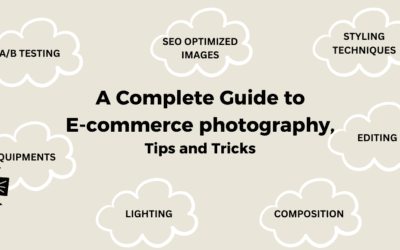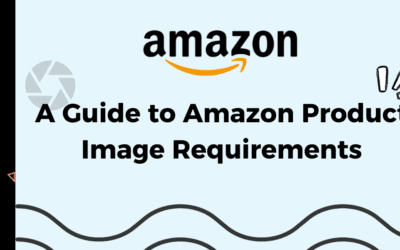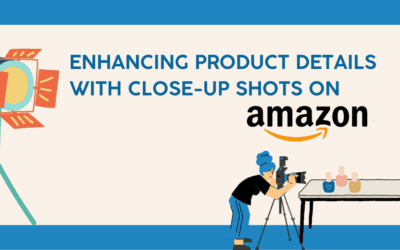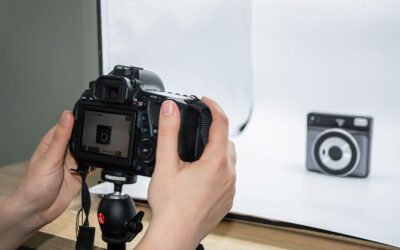The Cost of Product Photography in 2023: How to Budget Your Next Shoot
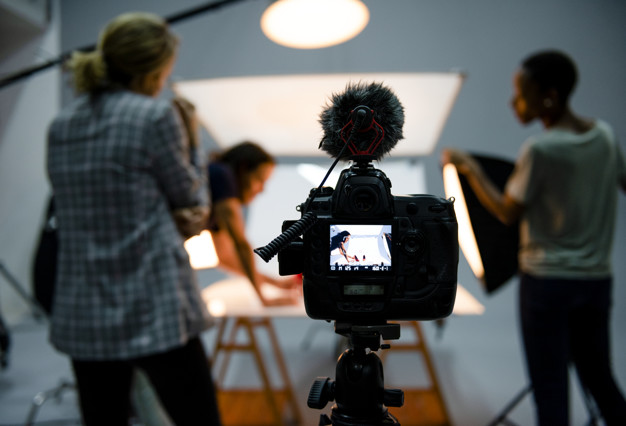
In today’s visually-driven digital landscape, high-quality product photography is crucial for any business looking to succeed. As we delve into 2023, understanding the cost of product photography and how to effectively budget for your upcoming shoots is more important than ever. In this blog post, we’ll explore the various factors influencing the cost of product photography and provide actionable tips on how to budget wisely.
Which Factors are Influencing Product Photography Costs?
Type of Products:
The significance of understanding how the type of products you’re photographing impacts the cost of your photography project cannot be overstated. This factor acts as a fundamental cornerstone in shaping the overall budget. Delving deeper into this aspect unveils a world of intricacies that guide photographers’ efforts and resource allocation.
Product Intricacy:
The level of intricacy inherent in your products holds a direct correlation with the time and effort required to photograph them effectively. Consider the example of jewelry versus machinery. Jewelry items, with their intricate designs, gemstones, and delicate surfaces, demand meticulous attention to detail during both the photoshoot and post-production phases. Photographers need to invest significant time to capture the play of light on each facet and to emphasize the uniqueness of each piece. On the other hand, machinery or industrial equipment might require a focus on capturing the scale, functionality, and rugged features. This could involve larger setups, specialized lighting to highlight textures, and a different set of skills altogether.
Product Size and Scale:
The size of your products is another pivotal aspect that affects the photography process. Smaller products might require macro photography techniques to capture intricate details, while larger products may necessitate a more expansive setup and a keen understanding of perspective to maintain accurate proportions. The size and scale of products dictate the equipment needed, the studio space required, and the overall complexity of the shoot.
Material and Texture:
The materials your products are made of and their textures add another layer of complexity. Photographing reflective surfaces like glass, metal, or shiny fabrics presents challenges that differ from shooting matte surfaces. For instance, photographing a glass perfume bottle involves managing reflections and highlights to showcase the product without distracting glares. Conversely, capturing the texture of a fabric or the grain of wood requires specific lighting techniques and attention to detail.
Photography Techniques:
Different types of products often require distinct photography techniques. When shooting jewellery, photographers might employ techniques like focus stacking to ensure every detail is in sharp focus. For products with intricate textures, photographers may use lighting setups that emphasize those textures effectively. Tailoring the photography approach to each product type requires specialized knowledge and skill, influencing the cost accordingly.
Number of Products:
The number of products you require to be photographed wields a substantial influence on the overall cost of your photography project. This factor operates on a principle that’s deeply entrenched in the concept of time and effort. While it’s intuitive that photographing a larger number of products would naturally lead to higher costs, there are several nuances to consider when budgeting for a shoot involving a substantial product count.
Photography Workflow and Planning:
When dealing with a larger volume of products, photographers need to meticulously plan the shoot to ensure each item receives the attention it deserves. This entails arranging the products, setting up the lighting, adjusting camera settings, and capturing multiple shots to ensure quality and variety. This workflow requires time and precision, factors that contribute to the overall cost.
Read More: Perfect Product Photography: Craft a Perfect Setup in 2023
Post-Production Considerations:
Beyond the photoshoot, handling a larger number of images during the post-production phase is a labour-intensive process. Each image necessitates editing, retouching, color correction, and quality control. As the volume of images increases, so does the time invested in post-production. Photographers meticulously fine-tune each image to meet your brand’s standards, which contributes to the overall cost.
Discounts and Workload:
It’s worth noting that photographers often offer discounts for larger product volumes due to the potential for long-term collaboration and streamlined workflows. While these discounts can mitigate the per-image cost, it’s imperative to account for the overall workload. Photographers need to allocate time and resources to ensure the quality of each image, and an excessive workload could potentially compromise the quality of the final output.
Photography Style:
The photography style you choose is a decisive factor that significantly impacts the cost of your project. Each style—ranging from the popular white background product photography to more creative and elaborate setups—comes with its own set of considerations.
Lifestyle Photography:
Opting for a lifestyle photography style involves creating scenes that showcase your products in real-life contexts. This might require location scouting, models, and props. The complexity of setting up these scenes and capturing natural interactions contributes to a higher cost.
White Background Photography:
The clean and minimalist white background style is often used for e-commerce platforms. While it might seem straightforward, achieving consistent lighting and perfect product positioning demands meticulous attention to detail. This style generally has a lower upfront cost compared to more elaborate setups.
Creative Setups:
Creative setups involve unique backdrops, intricate lighting arrangements, and unconventional angles. These setups can be visually stunning and highly impactful, but they require more time, equipment, and expertise, thereby increasing the cost.
Equipment and Setup:
Photographers wield a diverse array of specialized equipment to create captivating product images. The quality of this equipment significantly influences the overall cost of the shoot.
Camera and Lenses:
High-end cameras and lenses are crucial for capturing images with exceptional clarity, detail, and color accuracy. Photographers invest in equipment that complements their chosen style and ensures the best results for your products.
Lighting:
Lighting setups play a pivotal role in Amazon product photography. Whether it’s soft diffused light for a luxurious feel or dramatic lighting for showcasing textures, photographers use various lighting techniques and equipment to achieve the desired effect.
Backdrops and Props:
The choice of backdrop and any props used can contribute to the visual appeal of your product images. Photographers might use different textures, colors, and materials to complement your products and enhance their visual impact.
Editing and Post-Production:
The journey from a raw image to a polished final product involves meticulous editing and post-production work. This step is integral to achieving a professional and cohesive look across your product images.
Image Selection and Sorting:
Photographers sift through numerous shots to select the best images for editing. This process ensures that only the highest-quality images move on to the editing phase.
Color Correction and Retouching:
Editing includes tasks such as color correction to ensure accurate representation, retouching to remove imperfections, and enhancing details. This step demands expertise and attention to detail to create images that meet your brand’s standards.
Consistency Across Images:
In a product photoshoot, maintaining consistency across all images is paramount. This involves ensuring that lighting, color tones, and overall aesthetic align seamlessly throughout the entire set of product images.
Delving into the intricacies of factors such as the number of products, photography style, equipment and setup, and editing is essential for effectively budgeting your next product photography shoot. These factors interplay to shape the cost and quality of your final product images. By comprehending the nuances within each factor, you’re better equipped to allocate resources wisely, collaborate effectively with photographers, and ultimately present captivating visuals that resonate with your audience. Remember, investing in high-quality product photography services is an investment in the visual identity and success of your brand.
How to Budget Your Next Amazon Product Photography Shoot?
Define Your Requirements:
Creating a comprehensive outline of your product photography needs serves as the foundation for a successful shoot. This step involves not only identifying the products you intend to photograph but also delving into the finer details of the shoot.
Type and Number of Products:
Clearly specify the range and type of products that require photography. Whether it’s a diverse collection of fashion accessories or a series of electronic gadgets, understanding the variety and quantity helps photographers gauge the scope of the project.
Desired Photography Style:
Different products demand different visual treatments. Do you envision a clean, minimalist white background? Or would you prefer a more artistic lifestyle approach that contextualizes the products? Defining your desired photography style provides photographers with a clear direction for the shoot.
Read More: Use Amazon Product Photography to Build Your Brand and Grow Sales
Research Photographers:
Choosing the right photographer is pivotal to achieving your desired outcome. This step goes beyond just skimming through online portfolios and delves into a thorough evaluation.
Portfolio Assessment:
Scrutinize photographers’ portfolios to gain insights into their range, style, and past work. Look for consistency in quality and a style that resonates with your brand’s identity.
Client Reviews:
Feedback from previous clients can provide valuable insights into a photographer’s professionalism, work ethic, and ability to meet deadlines. A photographer’s track record is often a reliable indicator of their reliability.
Pricing Structure:
Compare the pricing structures of various photographers. Keep in mind that a higher cost might signify superior quality, specialized expertise, and advanced equipment.
Request Quotes:
Initiating communication with shortlisted photographers is a pivotal step in understanding the financial aspect of your project.
Detailed Project Information:
Provide photographers with a detailed project brief. This should encompass not only the products and desired style but also specifics such as dimensions, colour requirements, and any particular creative direction you have in mind.
Itemized Quotes:
Request itemized quotes that break down the costs involved. This breakdown could include photography fees, equipment rental, post-production costs, and any additional services you might require.
Consider DIY vs. Professional Photography:
The decision between DIY and professional photography hinges on factors such as budget constraints and the complexity of your products.
DIY Photography:
For simpler products and tight budgets, DIY photography might seem like a viable option. Using smartphones and basic setups can help cut costs, but it’s essential to maintain a consistent level of quality and professionalism.
Professional Expertise:
Complex products or those requiring a specific aesthetic often benefit from the expertise of professional photographers. Their mastery of lighting, composition, and equipment can result in images that elevate your brand.
Allocate for Unforeseen Costs:
Even the most meticulously planned shoots can encounter unexpected expenses. It’s wise to prepare for unforeseen costs to avoid compromising the quality of your images.
Editing and Retouching:
Depending on the volume and complexity of the images, editing costs might vary. Detailed retouching and adjustments contribute to the final polished look of your products.
Logistics:
Unexpected logistical challenges, such as location changes or equipment malfunctions, can impact the budget. Having a contingency fund ensures you’re equipped to tackle these issues.
Negotiate and Bundle:
Engaging in negotiations and exploring bundle options can optimize your budget without compromising on quality.
Package Deals:
Some photographers offer packages that include multiple services or shoots. Negotiate these deals to see if you can secure a better rate by bundling services.
Customization:
While packages provide cost savings, don’t hesitate to discuss customization. Tailoring the services to your specific needs can result in a more accurate reflection of your project’s requirements.
Long-Term Investment:
Shifting your perspective from viewing product photography as a mere expense to recognizing it as a strategic investment can yield substantial returns.
Enhanced Brand Image:
High-quality images establish a sense of professionalism and authenticity, enhancing your brand’s image in the eyes of potential customers.
Sales Boost:
Compelling product visuals have a direct impact on sales. Customers are more likely to engage with and make purchases from brands that present their products attractively.
Return on Investment:
While investing in professional product photography incurs costs, the long-term benefits in terms of increased sales and brand recognition can provide a solid return on your initial investment.
Conclusion:
As we navigate the evolving landscape of 2023, understanding the cost of product photography and effectively budgeting for your shoots is a strategic move for businesses. By considering factors like product complexity, photography style, and editing, and by following the budgeting tips outlined above, you’ll be better equipped to secure stunning product images that resonate with your audience and drive your business forward. Remember, investing in top-notch product photography is an investment in the success of your brand.
Recent Posts
- Mastering Amazon Product Photography: Key Considerations for Optimal Results
- Unlocking Success: The Importance of Amazon Listing Optimization for Increased Sales
- A Guide to Amazon Listing Optimization in 2024
- Capturing Commerce: The Impact of Product Photography on Ecommerce Growth
- A Complete Guide to E-commerce photography, Tips and Tricks
